
Bulgaria is an amazing country that has many adventures to offer foreigners. There are so many points of interest that the options can be overwhelming!
In this Sofia travel guide, we’ll get you acquainted with some of the most interesting places to visit in Sofia and provide you with travel tips to give you more confidence during your very first visit to the Bulgarian capital.
BulgarianPod101 invites you on this intriguing virtual tour before you travel to Sofia, so you can feel the atmosphere of this big city before you even arrive.
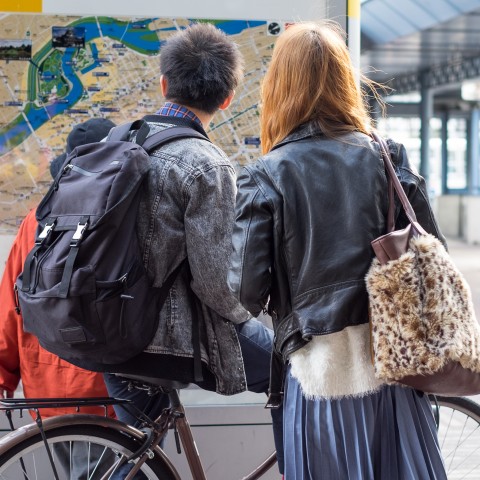
 Table of Contents
Table of Contents
- Before You Go
- Sofia Travel Tips
- 7 Must-See Places in Sofia for a 1-3 Day Trip
- Highly Recommended Places for a 4-7 Day Trip (or Longer)
- Bulgarian Survival Phrases for Travelers
- How BulgarianPod101 Can Help You Master Bulgarian
Before You Go
Before you go on this exciting journey, you may want to learn more about the city you’ll be visiting. In the following sections, you’ll find some basic information about Sofia’s past, population, and climate.
History
Sofia is the capital city of Bulgaria. It’s an ancient city with a long history dating back to 7000 BC when Thracian tribes settled here. Over the following centuries, the Thracians were occupied by the Romans and the Ottomans. The city’s location at the foot of Vitosha Mountain has been considered strategic, thus very attractive for various conquerors. As this land has been inhabited by many tribes and cultures, the remnants of them can still be seen in Sofia. There are Roman ruins, an amphitheater, old churches, and many other sights in this large city.
The city’s name has also been changed many times by new conquerors. During the Roman reign, the city was known as Serdica. In those times, it was an important center that had influence over the whole region. Today, you can still see the Roman ruins around the Saint Sofia Church. There are glass windows in the church, through which you can see the old Roman theater. You can also see the big amphitheater’s ruins nearby, testifying that this lively cultural center was once located here, under modern Sofia.
Before the city of Sofia received its modern name following its liberation from the Ottoman yoke in 1878 by the Russian Empire, the city was also called Sredets and Triaditsa.

Population
Sofia was heavily populated in the late eighteenth century, home to about 70,000 people. In 1878, the population shrank to only 11,649 people (down from the 19,000 residents eight years prior). However, once Sofia became the new capital of Bulgaria, the number of residents started to increase. Today, the population of Sofia is about 1.23 million—almost 20% of the country’s total population.
Climate
You’ll find this information helpful if you would like to know the best time to visit Sofia. Let’s see what the weather is like in Sofia throughout the year.
The winter months in Sofia are December, January, and February. If you plan to visit Sofia in winter, be prepared for cold temperatures and snowy weather, especially in January and February which are considered the coldest months. The temperature can drop to below -15 °C (5 °F), but is usually about 0 – 5 °C (32 – 41 °F). The snow cover in Sofia lasts about sixty days.
Summers in Sofia (June through August) are sunny and hot. The temperature can exceed 35 °C (95 °F) near the end of July and the beginning of August. This is the time of year when the city receives the most tourists.
Spring and autumn have relatively mild weather, though the weather is more variable and dynamic during these seasons and there could be thunderstorms. There could be fog in Sofia, especially at the beginning of spring and winter, when the weather is subject to drastic changes.
Sofia Travel Tips
If you’re planning to travel to Sofia for the first time, these Sofia travel tips will be very helpful. In the following sections, we’ll discuss currency, accomodation prices, visa rules, food, and transportation.
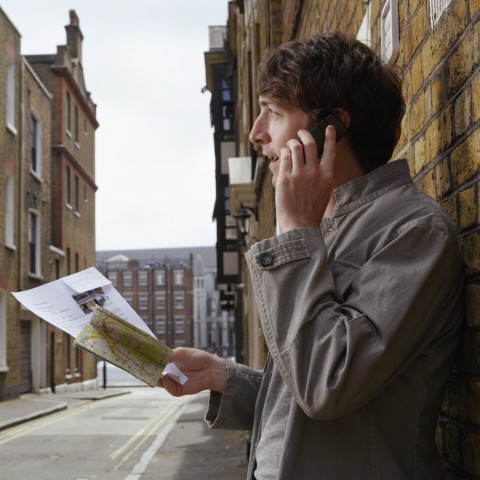
Currency in Bulgaria
The Bulgarian lev is the national currency. 1 euro is pegged to 1.96 leva, which means that 2 Bulgarian leva make roughly 1 euro. So when you’re trying to figure out how much something in Bulgaria costs in euros, the easiest way is to divide the amount by two.
Accomodation Prices in Sofia
The price of your accommodation will depend on the level of luxury you prefer:
- Luxury: There are many five-star and four-star hotels that typically cost $100 or more per night.
- Mid-range: The mid-range price for accommodation, depending on the conditions, ranges from $40 to $80 per night.
- Budget: If you prefer to stay in a hostel, a bed in a dormitory will cost between $5 and $12 per night. If you would like to rent a double bed room, it may cost up to $40.
You can learn some basic words and phrases for talking about accommodation in our lesson What Are Your Accommodation Options in Bulgaria?
Visa Rules
Visa rules in Bulgaria differ based on the nationality of the traveler. If you’re an American, you’ll be allowed to stay for up to ninety days and renew your stay every six months. Bulgaria is not part of Schengen yet, but it is part of the EU. If you hold a valid Schengen visa, you’ll be able to take advantage of a visa-free regime and stay in Bulgaria for up to three months within any six-month period. The same conditions apply to residents of Romania, Cyprus, and Croatia.
There are three types of visas to Bulgaria:
- Visa A for airport transit, which costs $71
- Visa C for a short stay (up to ninety days), for transit or a planned stay, which costs about $71; however, the exact price may vary based on the international agreements
- Visa D for a long stay, which costs $118 when you’re planning a stay of six months, and $236 for a one-year stay
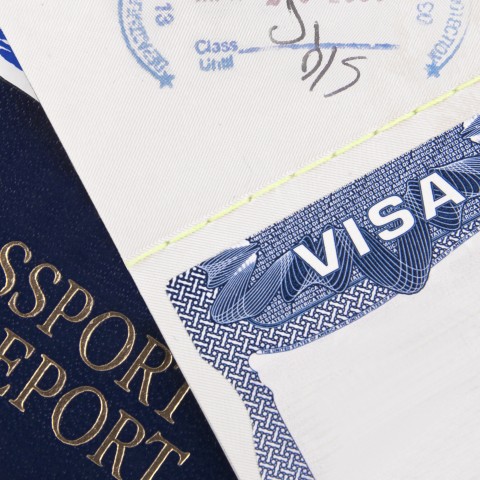
Food in Sofia
Vegetarians will find Bulgaria a great place to dine due to the numerous fruits, vegetables, and dairy products available in the stores and markets. Even vegans can find food here in every season, and there are some restaurants that offer solely vegan food (such as Edgy Veggy, Soul Kitchen, Loving Hut, and Colibri Kitchen).
Keep in mind that Bulgarians are obsessed with dairy foods like yogurt and cheese, which always have to be present on their tables (alongside bread). In vegetarian restaurants, you can order the national Shopska salad with cheese, stuffed peppers, banitsa, cold soup tarator, breaded cheese, guvech, etc.
Like most Balkan nations, the majority of Bulgarians are meat-lovers. If you prefer meat, there are so many dishes to choose from. We recommend you try the kapama, a traditional dish prepared with different types of layered meat and stuffed cabbage leaves. Kebapche (a minced meat stick with spices grilled on a barbeque) and shkembe chorba (tripe soup) are also great choices.
- ➢ BulgarianPod101 provides a helpful list of Bulgarian phrases to use in a restaurant for ordering food, and a list of the most popular Bulgarian foods. Check them out to brush up on some basic Bulgarian before your trip!
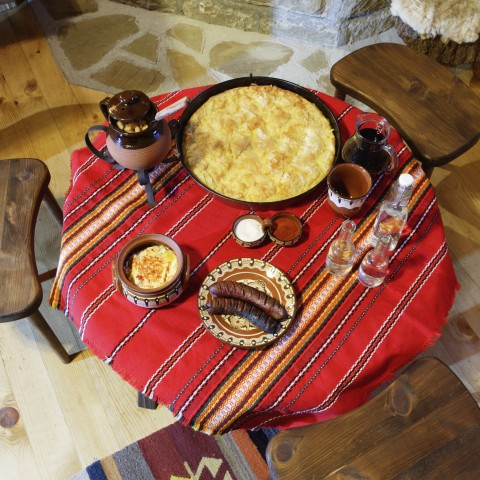
Transportation in Sofia
If you would like to use the cheapest possible transportation in Sofia, then use the Sofia metro. It can be a little bit confusing, but it will take you from the airport to the downtown area for less than 1 euro. This trip will take about thirty minutes. Always have your ticket within easy reach, as the ticket control might show up at any stop to check it.
The other options for transportation include taking a bus or a tram. In these cases, you’ll be able to buy tickets directly from the driver. Make sure to punch your ticket inside the yellow punchers located on the poles of the bus or tram, as this will validate it. Those who don’t have a valid ticket upon control check will be fined 30 leva.
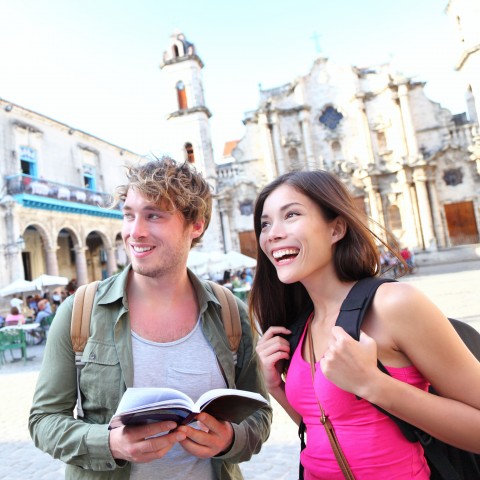
7 Must-See Places in Sofia for a 1-3 Day Trip
It’s time to start our virtual journey of Sofia. To start, let’s look at seven places you must visit in Sofia if you’re short on time!
#1: Boyana Church
In Bulgarian: Боянска църква музей (Boyanska tsarkva muzey)
This medieval Bulgarian Orthodox church is located at the base of Vitosha Mountain, in a region that is also called Boyana.
It was built in three stages, from the tenth century to the middle of the nineteenth century. There are 240 human images and 89 scenes depicted on its walls. UNESCO describes Boyana Church as “one of the most complete and perfectly preserved monuments of east European medieval art,” so it’s definitely worth visiting if you’re interested in medieval culture, architecture, and art. As this church is located in the outskirts of Sofia, it’s good to plan your visit ahead of time.

#2: Alexander Nevsky Cathedral
In Bulgarian: Катедрала “Свети Александър Невски” (Katedrala “Sveti Aleksandar Nevski”)
This Orthodox cathedral was built in a neo-Byzantine style in the nineteenth century and is named after Alexander Nevsky, a Russian saint. It displays the relics of the saint to the left of the altar.
This church is located in the very center of Sofia, just behind the Bulgarian parliament and adjacent to St. Sofia Church. There are many other notable landmarks nearby, so you can plan to visit them all in a single day. Some of these locations include:
- The National Art Academy
- The Sofia Opera and Ballet Hall
- The National Gallery of Foreign Art
- The Monument of the Unknown Soldier
- A park with a small flea market in it
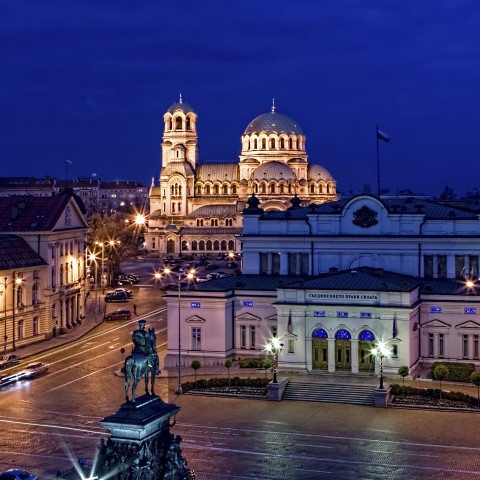
#3: Rotunda of St. George
In Bulgarian: Храм-ротонда “Св. Георги” (Hram-rotonda “Sveti Georgi”)
This small, round church was initially built as a Roman bath in the fourth century when the city of Serdica belonged to the Roman Empire, and was later transformed into an Orthodox church. Located in the city’s center, this is part of a larger archeological complex and is the oldest building in the Bulgarian capital. You’ll be able to see medieval frescoes inside and Roman streets outside.
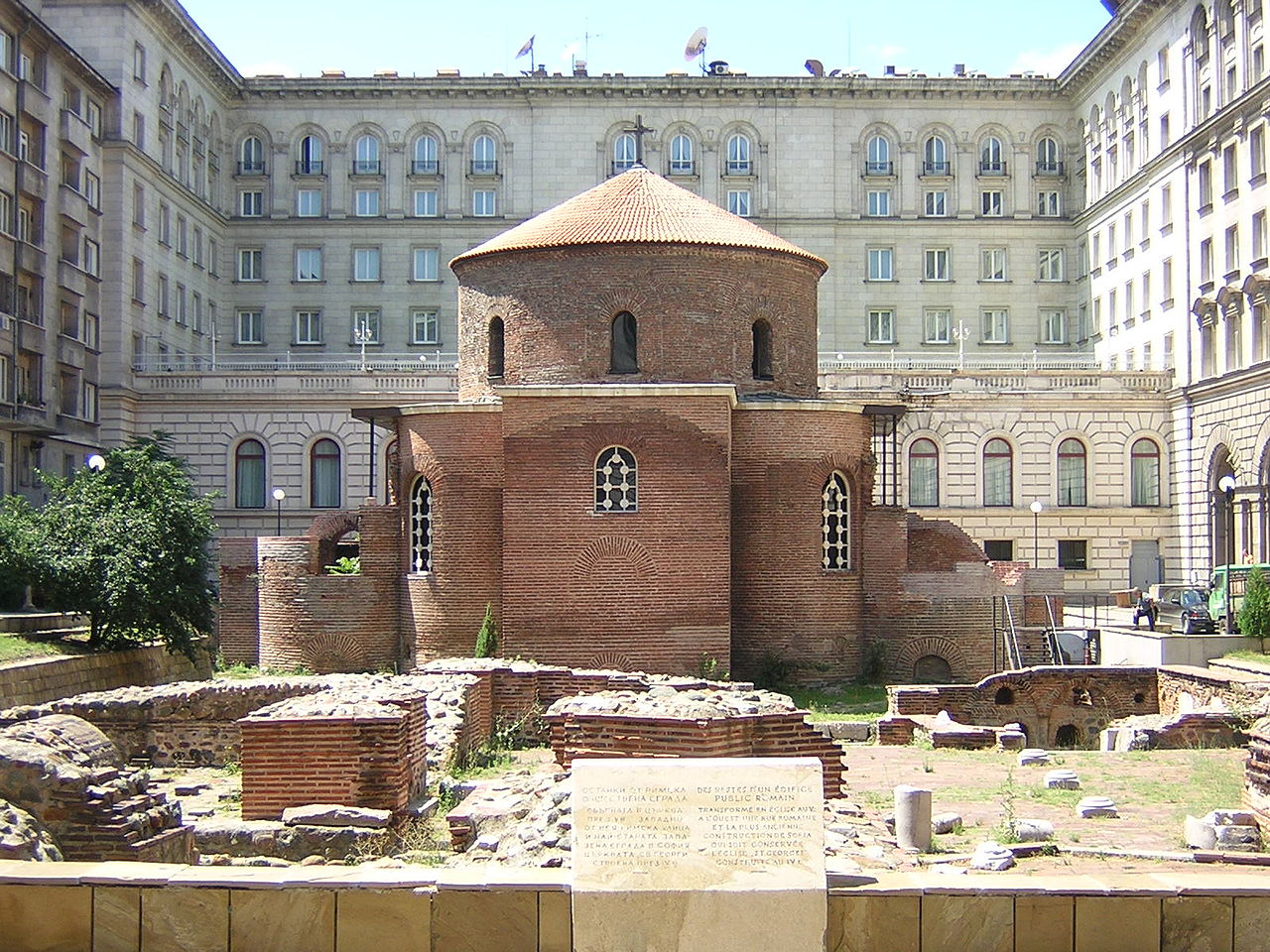
#4: Earth and Man Natural Museum
In Bulgarian: Национален музей “Земята и хората” (Natsionalen muzey “Zemyata i horata”)
This sight would definitely be attractive for geology-lovers as well as children who are interested in science, as it features collections of huge minerals and their derivatives. This museum is located in the neighborhood of Lozenets and is one of the largest mineralogical museums in the world.

#5: Kuklite (The Dolls) Art House
In Bulgarian: Арт къща куклите (Art kashta kuklite)
This is a fascinating place for kids, containing more than 3,000 dolls from all over the world. It also offers weekly workshops explaining how to make a doll, though you’ll need to book in advance to attend one. If you’re traveling to Sofia with children, a visit here would be a great opportunity for them to see porcelain, ritual, modern, vintage, and antique dolls as well as marionettes. Young and old alike will be delighted by these whimsical doll displays!
The museum is located in the center of Sofia, not too far from the Rotunda of St. George. You can add it into your schedule while you visit different landmarks located in this area.
#6: Muzeiko
In Bulgarian: Музейко (Muzeyko)
Muzeiko is a museum for children dedicated to science and the arts. The project cost twenty million dollars to get started, and today features over 130 games and activities that will help your little ones easily learn interesting science facts. There’s also a planetarium that has a show, so you can secure some time for this as well. This kids’ museum is located in the Students’ City neighborhood in Sofia.
#7: National Archaeological Museum
In Bulgarian: Национален археологически музей (Natsionalen arheologicheski muzey)
The National Archaeological Museum is located in the center of Sofia, at the Atanas Burov Square.
This museum housed a mosque in the fifteenth century, but opened as a museum in 1905. It includes ancient Thracian, Greek, and Roman artifacts, as well as medieval books and collections. It’s appropriate for people of all ages who are interested in Bulgarian culture and history. A 3D virtual tour is available online.
Highly Recommended Places for a 4-7 Day Trip (or Longer)
Are you planning a longer stay? Great! This will give you ample time to see even more of the best places to visit in Sofia, Bulgaria. Here are a few that we recommend!
#8: Eagles’ Bridge
In Bulgarian: Орлов мост (Orlov most)
This bridge is located just below the Monument to the Soviet Army in the heart of Sofia. It’s called Eagles’ Bridge because of the four majestic iron eagles located on top of the pillars. Beneath the bridge, there’s a small river flowing. This bridge, together with the Lions’ Bridge, is among the most popular tourist destinations. Don’t miss it if you’re nearby!
#9: Lions’ Bridge
In Bulgarian: Лъвов мост (Lavov most)
This gorgeous bridge is called Lions’ Bridge because of the four metal lions located on each of its pillars. The bridge goes over the Vladaya River, and it’s located on Maria Luiza Boulevard only a few meters from the Ladies Market (in Bulgarian: Женския пазар [Zhenskiya pazar]).

#10: Ivan Vazov National Theater
In Bulgarian: Народен театър Иван Вазов (Naroden teatar Ivan Vazov)
This National Theater is built in a Viennese style and is located in the central City Garden. It’s decorated with statues of Apollo among the muses, which have golden instruments. The first play performed here was Vazov’s The Outcasts. The theater was damaged during World War II, but was later renovated to maintain the architecture and original appearance of the building. This landmark is one of the symbols of Bulgarian culture.
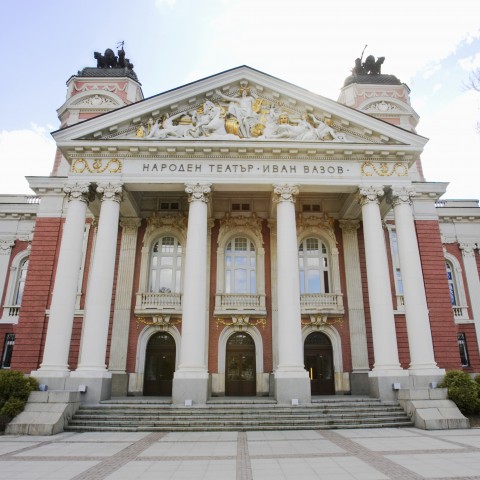
#11: Roman Wall
In Bulgarian: Римска стена (Rimska stena)
The actual Roman ruins can be found inside the hotel lobbies and in the metro. Strangely enough, although it’s called the Roman Wall, this wall was built by the Ottomans in the sixteenth century. It was part of a religious complex, from which only this stone gate remains. It’s located in the Lozenets region near the Saturday “Roman Wall” farmers’ market.

#12: Sofia Opera and Ballet Hall
In Bulgarian: Софийска опера и балет (Sofiyska opera i balet)
This hall has been occupied by the Sofia Opera since 1957. Tickets here are more affordable than those of halls in many other European cities. The building is decorated with multiple figures of performers, namely orchestra musicians and singers. It’s located in the city center.
#13: The Snail House
In Bulgarian: Къща Охлюв (Kashta Ohlyuf)
The Snail House is the most extravagant building in Sofia, located in the district of Simeonovo. This colorful five-story building is built in the form of a giant snail, and its non-standard shape fits well with the surrounding environment. There are small butterflies and ladybugs on the roof, along with some other smaller snails. It was built in 2008 using entirely eco-friendly materials. It features no edges or corners, and no bricks were used in its construction.
#14: Sofia Graffiti Tour
In Bulgarian: София Графити Тур (Sofiya Grafiti Tur)
If you’re a graffiti-lover, this two-hour evening tour (Saturdays and Sundays only) would be an exciting experience. It takes you to the best urban art streets in Sofia with thriving graffiti scenes, and the best part is that you choose how much to pay for the tour!
#15: Borisova Gradina Park
In Bulgarian: Княз-Борисова градина (Knyaz-Borisova Gradina)
This park is named after Bulgarian Tsar Boris III. It’s the most popular, the largest, and the oldest park in Sofia. Among the landmarks located in this park are:
- Lake Ariana
- The national stadium “Vasil Levski”
- The Bulgarian Army Stadium
- The Lake with the Lilies
- Many monuments of prominent Bulgarians
- The Astronomical Observatory of Sofia University
- The Maria-Louisa Swimming Complex
- The Sofia TV Tower
- The Mound of Brotherhood
- The Japanese Corner
#16: Cherni Vrah
In Bulgarian: Черни връх (Cherni vrah)
This is the highest peak of Vitosha Mountain, rising to 2290 meters (about 7513 feet). The best time for hiking this summit is in the summer, and there’s a guided hike offered for inexperienced climbers. Many locals enjoy spending a weekend on Vitosha Mountain while in the capital. This unforgettable hike will reveal amazing views over the city and other mountains.
Bulgarian Survival Phrases for Travelers
To conclude our Sofia travel guide, let’s look at the most important Bulgarian phrases you’ll need to know before you travel to Sofia. You could write these phrases down in your diary or notebook and look them up whenever you need to speak with a Bulgarian, though memorizing them may give you the best experience.
- Hello. – Здравейте (Zdraveyte)
- Thank you. – Благодаря (Blagodarya)
- Goodbye. – Довиждане (Dovizhdane)
- Sorry. – Извинете (Izvinete)
- Very good. (Perfect.) – Много добре (Mnogo dobre)
- I don’t/can’t understand. – Не разбирам (Ne razbiram)
- Where is the restroom? – Къде е тоалетната (Kade e toaletnata)
- How much is it? – Колко струва (Kolko struva)
- I want this. – Искам това (Iskam tova)
- Help! – Помощ (Pomosht)
You can learn more practical phrases in our Survival Phrases lesson series!
How BulgarianPod101 Can Help You Master Bulgarian
BulgarianPod101 is excited to share with you this travel guide containing the best places to visit in Sofia, Bulgaria. Hopefully, this virtual tour around Sofia has given you the motivation and inspiration you need to make plans and visit Sofia yourself.
If you need to learn some more survival phrases or conversational Bulgarian, our MyTeacher service would be of great help to you. You can choose your own private Bulgarian teacher, who will reveal to you the beauty of the language and make it easier for you to start understanding and speaking it.
Before you go, which of these Sofia attractions do you most want to see, and why? We look forward to hearing from you!










